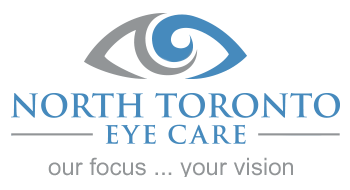
The average adult eye ball is 22 to 25 mm long. Despite their small size, our eyes can tell doctors a lot about our health. In fact, your retina – the nervous tissue that lines the inside of your eyes, is the only place in your body where your blood vessels can be seen directly! Many health conditions can be detected from your eye examination, here are a few conditions that can be seen:
1. Brain aneurysm
An aneurysm describes an abnormal bulge or ballooning of the blood vessel wall. There may not be any symptoms of a brain aneurysm, but sometimes they can cause symptoms such as a severe headache, sudden double vision, and a droopy eyelid. If an aneurysm ruptures, it can be life-threatening.
2. Brain tumour
A brain tumour can lead to increased pressure in the brain. As a result, the optic nerve that connects the eyes to the brain can become swollen. This can lead to symptoms such as headaches, loss of peripheral vision, and sudden double vision.
3. Cancer
Different types of cancers can be found on the skin around the eye, on the eye, and within the eye. Cancers in the body, such as breast or lung cancer, can also spread into the eye.
4. Diabetes
Diabetes can affect the integrity of the blood vessel walls in the body. As a result, some people can have leaky retinal vessels, which leads to bleeding and/or swelling.
5. Giant cell arteritis (GCA)
GCA is caused by the inflammation of medium and large-sized arteries. Most commonly, the arteries of the head that also nourish the eyes are affected. When these vital arteries are inflammed, they will narrow and result in poor blood flow. People can experience sudden vision loss or reduced vision or double vision. Having GCA is associated with increased risk of strokes and heart attacks, so early treatment and monitoring is important.
6. High blood pressure
The retinal blood vessels can become unusually bent and twisted, or have bleeds in the presence of uncontrolled blood pressure. Having high blood pressure also increases your risk of having other eye conditions, such as glaucoma.
7. High cholesterol
When there is high cholesterol, some people will develop a yellow or blue ring around the cornea, which is called arcus. In some cases, a retinal cholesterol embolus may be present and this can lead to vision loss and could eventually lead to a stroke.
8. Inflammatory diseases
People with conditions such as, rheumatoid arthritis, sarcoidosis, and Crohn’s disease, can also be at risk of having inflammation in the eye. Different structures within the eye can become inflammed, such as the iris and sclera (the white of the eye). People with inflammatory conditions also have a higher chance of having dry eyes.
9. Multiple sclerosis (MS)
MS is a degenerative disease of the central nervous system – this includes the brain, spinal cord, and optic nerves. Ocular symptoms of MS include blurred vision, affected colour vision, and pain with eye movement. Often times these symptoms may come and go.
10. Myasthenia gravis (MG)
MG is a neuromuscular disease that affects the body’s skeletal muscles that are responsible for body movement. These muscles control the eyelid and eye movement. As a result, those with MG may experience drooping eyelids or double vision, especially at end of the day when the muscle are fatigued.
11. Sexually transmitted diseases (STDs)
Herpes, syphilis, gonorrhea, HIV/AIDS, genital warts, and pubic lice can affect different parts of the eye. Eye issues arising from STDs can range from pink eye to retinal detachment.
12. Sickle cell disease
This is a genetic blood disorder that causes red blood cells to be misshapen, and as a result they cannot deliver oxygen as well as normal red blood cells. These misshapen cells can block blood flow and cause an array of eye issues depending on where the blockage occurs. Eye conditions can range from mild (e.g. burst blood vessel on the surface of the eye) to very serious (e.g. retinal detachment).
13. Stroke
Some people can have blockages (emboli) within the blood vessels of the retina. These emboli can cause people to experience temporary vision loss or decreased vision. Having a retinal embolus is associated with an increased risk of stroke. When people have strokes, their peripheral vision can be affected.
14. Thyroid disease
Hyperthyroidism (commonly caused by Grave’s disease) is more likely to affect the eyes, but hypothyroidism can impact the eyes as well. Symptoms can include protruding eyes (proptosis), dry eyes, double vision and vision loss.
Mukamal, Reena. (2022, April 29). 20 Surprising Health Problems an Eye Exam Can Catch. American Academy of Ophthalmology. Retrieved September 21, 2022, from https://www.aao.org/eye-health/tips-prevention/surprising-health-conditions-eye-exam-detects
